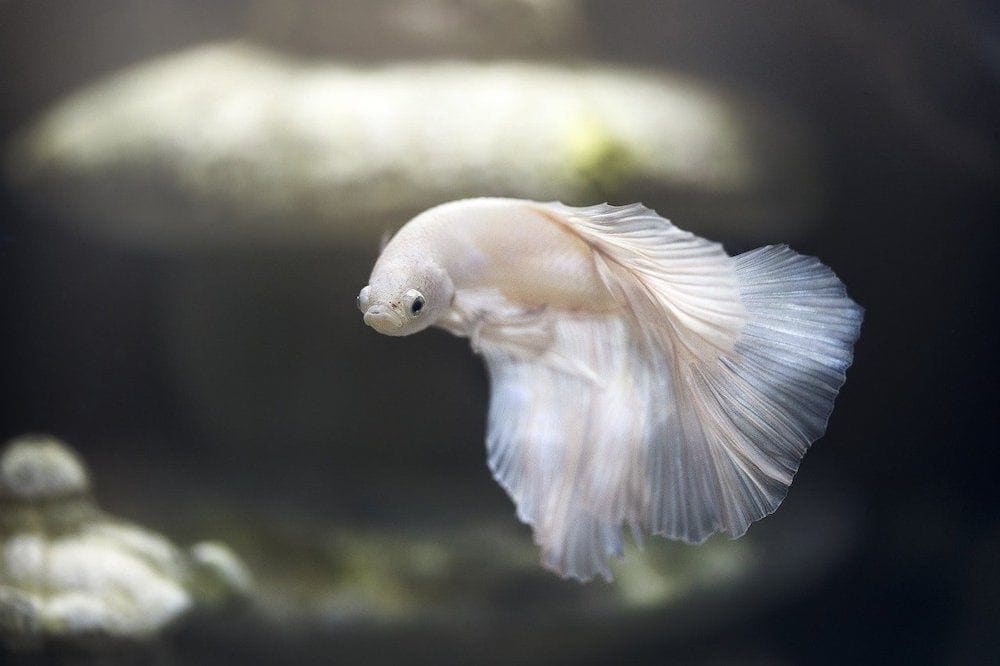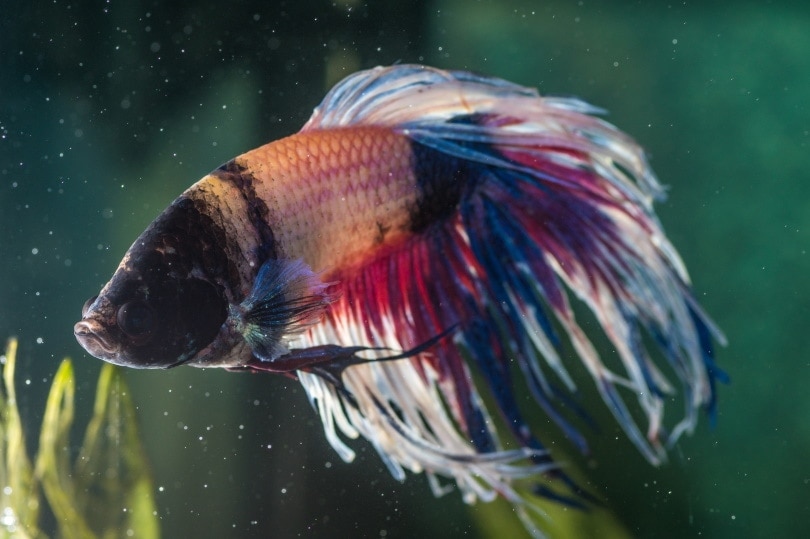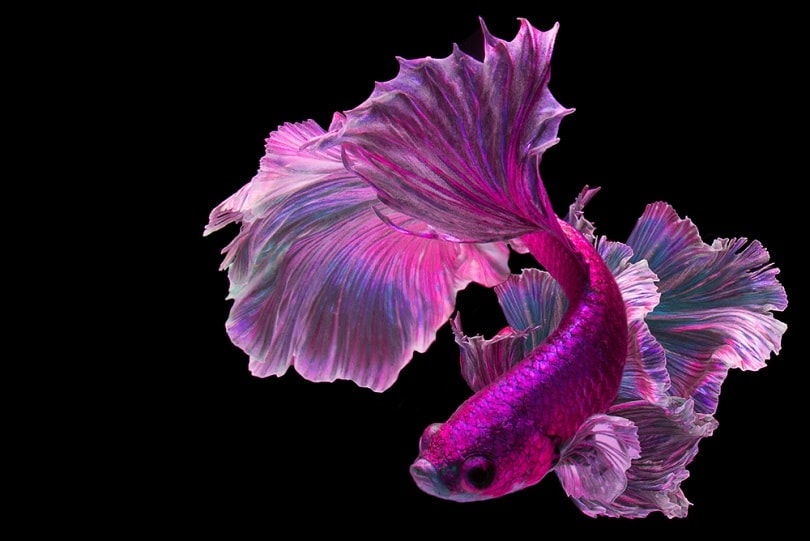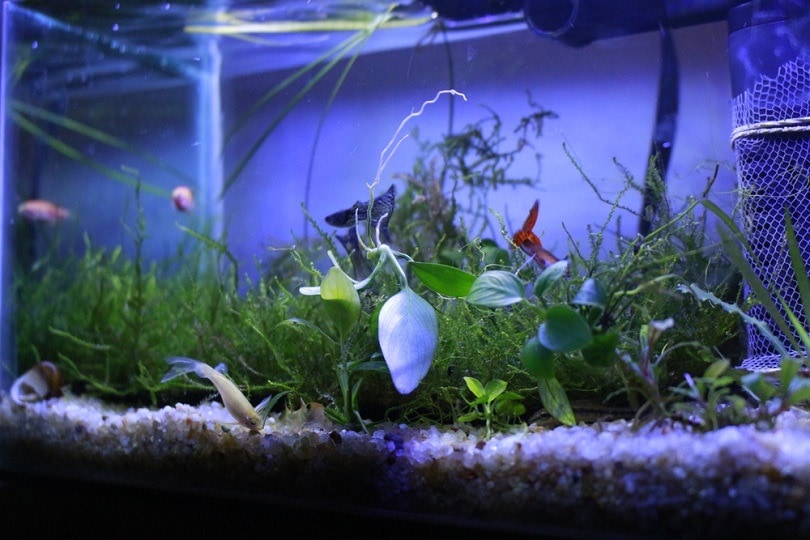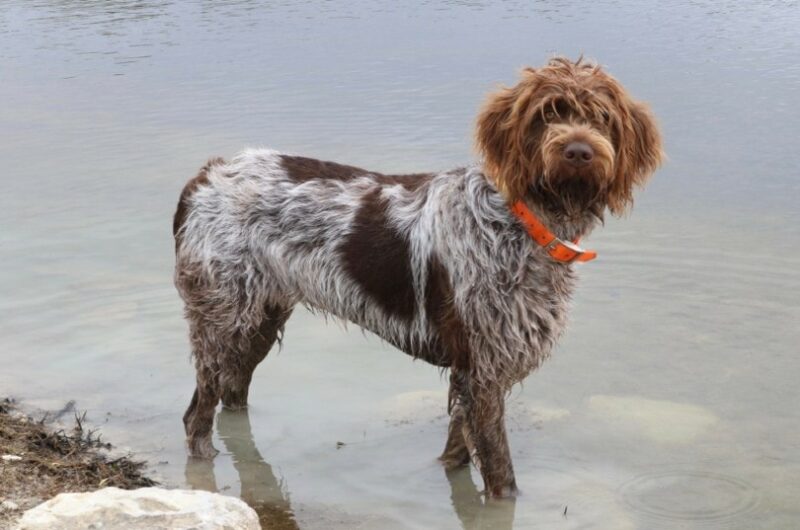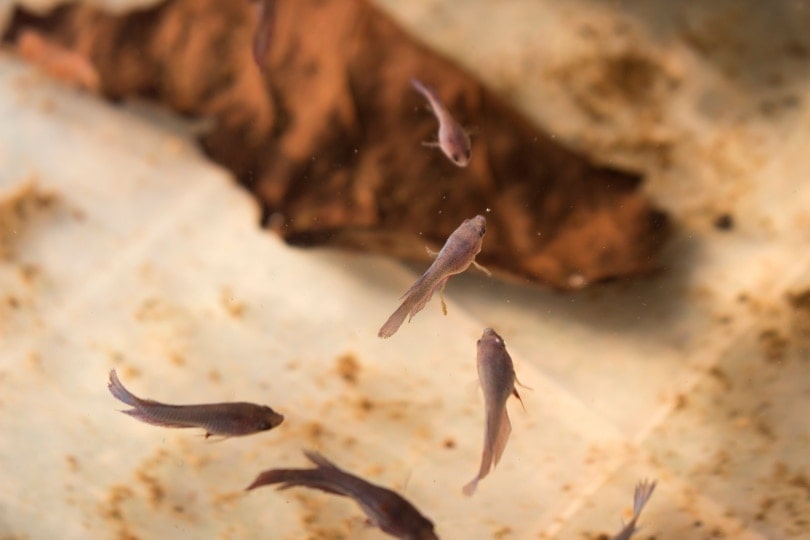14 Great Algae Eaters for Betta Fish Tanks: Compatibility Guide
By Ashley Bates
Updated on
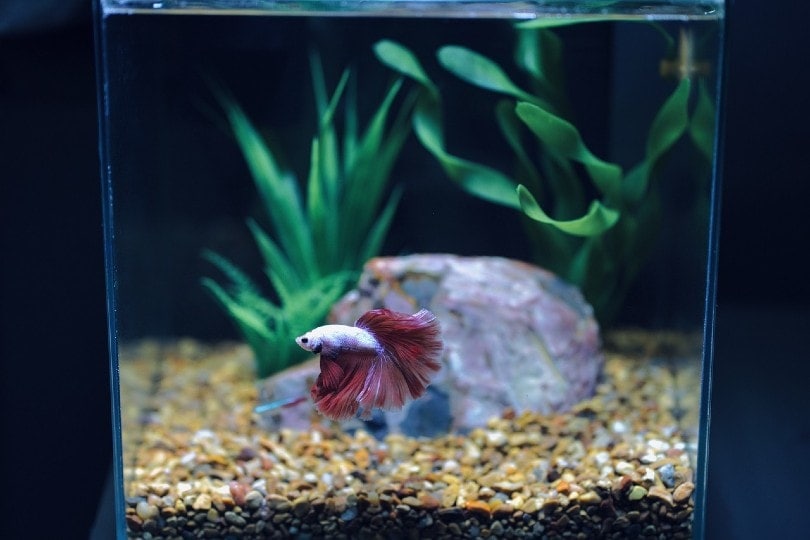
Who doesn’t love the idea of adding life to their aquarium that also helps with the cleaning process? Tanks get messy quick—you know, with all that poop and leftover food bits. Without frequent cleaning, your Betta is practically trapped in a cesspool of their waste.
To stretch the time between cleaning, algae eaters can come along to save the day. Unfortunately, Bettas can be a little testy, so we hand-picked the top algae eaters that get along with them just fine.
The 14 Great Algae Eaters for Betta Fish Tanks
1. Ghost Shrimp
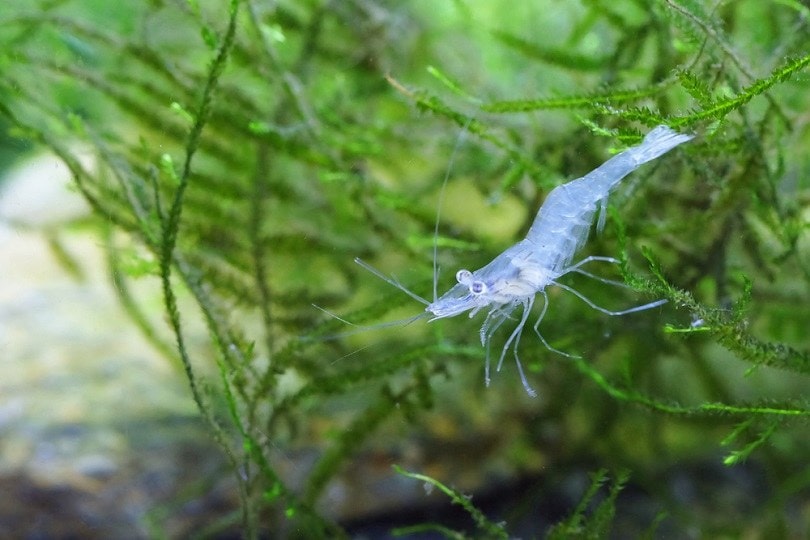
| Size: | 2 inches |
| Diet: | Omnivores |
| Minimum tank size: | 10 gallons |
| Care Level: | Beginner |
| Temperament: | Agreeable |
Ghost shrimp are small, springy tank mates that get along well with Betta fish. They are also incredibly beneficial for the Betta’s tank environment. These shrimp work diligently to get rid of debris and buildup in the tank, so you can keep the aquarium cleaner for longer. Unlike bottom feeders, shrimp swim freely through the tank.
2. Flying Fox
| Size: | 4.7 inches |
| Diet: | Omnivores |
| Minimum tank size: | 100 gallons |
| Care Level: | Intermediate |
| Temperament: | Territorial |
The flying fox is a zippy little fish that tops out just below 5 inches. These fish work well with Bettas, permitting that you have a large enough aquarium. However, even though they are small, they require a big space to swim, so make sure your tank is compatible with their needs.
3. Clown Pleco
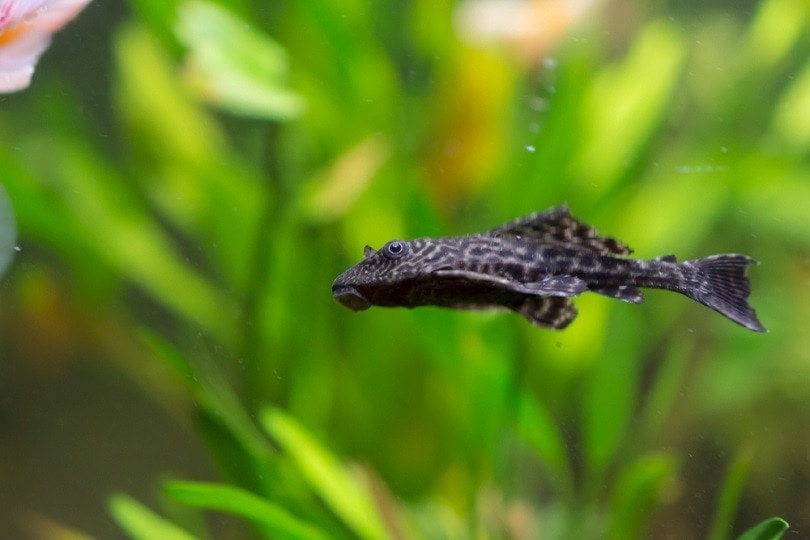
| Size: | 3.5 inches |
| Diet: | Omnivores |
| Minimum tank size: | 20 gallons |
| Care Level: | Easy |
| Temperament: | Agreeable |
The clown pleco is an adorable little fish that is common but also often overlooked. These fish are happy in both smaller 20-gallon aquarium spaces, but they also love space to swim around, so a larger enclosure is fine, too. As an extra perk, these fish are very efficient algae eaters.
4. Plecostomus

| Size: | 15 inches |
| Diet: | Herbivore |
| Minimum tank size: | 150 gallons |
| Care Level: | Easy |
| Temperament: | Semi-aggressive |
You might have seen the Plecostomus swimming around in lots of aquatic shops all over. These fish are in the catfish family and are also commonly referred to as “suckermouth catfish.” It isn’t often they would bite fingers, but they can sometimes be aggressive toward tankmates.
5. Cherry Shrimp
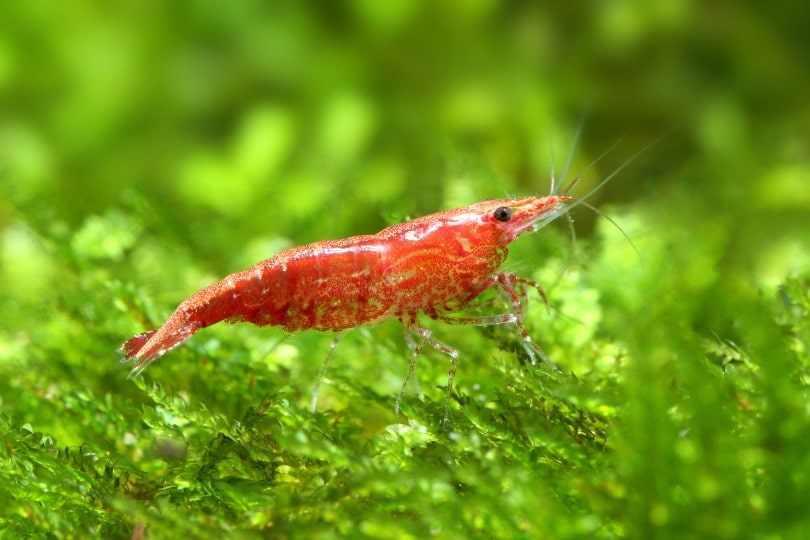
| Size: | 1.5 inches |
| Diet: | Omnivores |
| Minimum tank size: | 5 gallons |
| Care Level: | Beginner |
| Temperament: | Agreeable |
Cherry shrimp are adaptable little creatures that pair well with Bettas. They are bright, creating an orangish-red pop in any aquatic setup. They require very little space, so you can have them in virtually any sized tank. These shrimp are active in the cage, so they’re a ton of fun to watch.
6. Cory Catfish
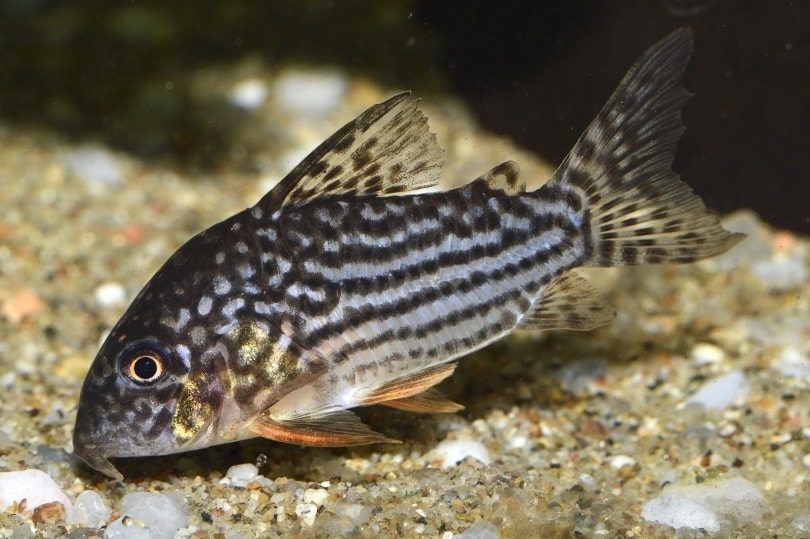
| Size: | 4 inches |
| Diet: | Omnivores |
| Minimum tank size: | 20 gallons |
| Care Level: | Easy |
| Temperament: | Agreeable |
Cory Catfish are handy bottom dwellers that coexist peacefully with tankmates. They don’t get too large, so they work for many setups. Because of their calm nature, you can keep them with many types of aquatic life.
7. Common Molly
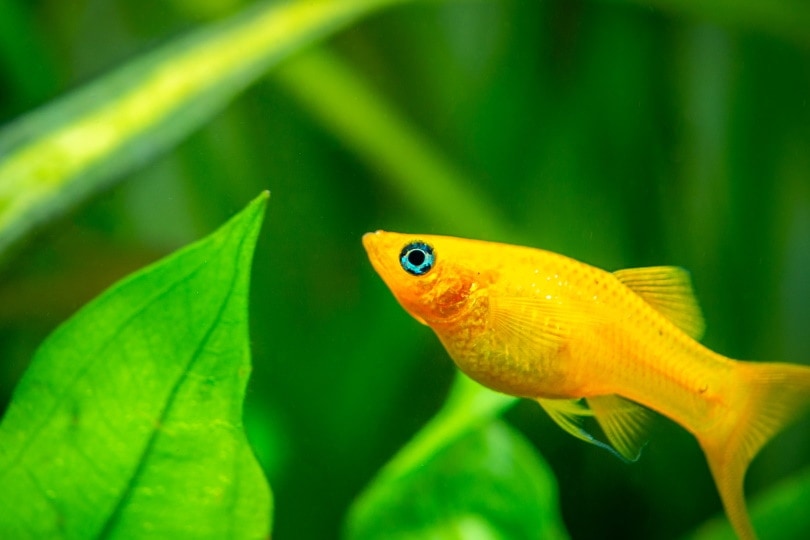
| Size: | 4.5 inches |
| Diet: | Omnivores |
| Minimum tank size: | 10 gallons |
| Care Level: | Easy |
| Temperament: | Peaceful |
Mollys work well in many environments because they are adaptable and agreeable. These fish keep to themselves, swimming around without too much interaction toward tankmates. Because of their calm demeanor, they tend to stay out of the Betta’s way.
8. Guppies
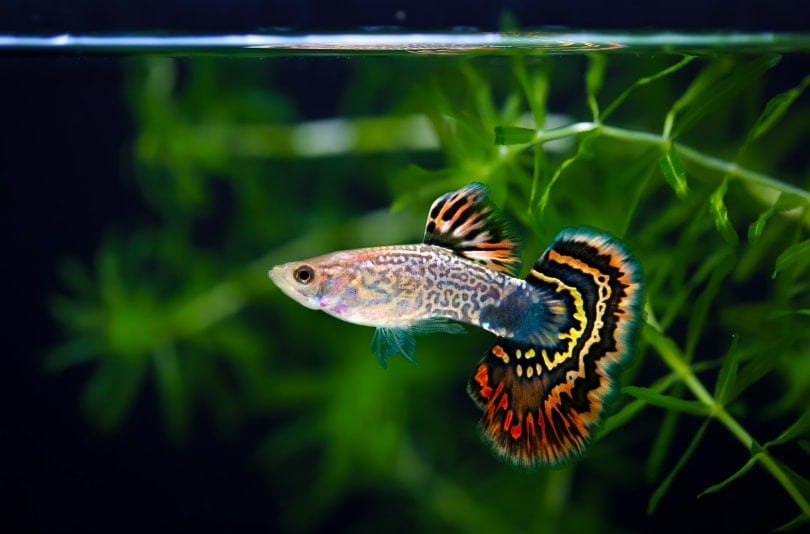
| Size: | 2.5 inches |
| Diet: | Omnivores |
| Minimum tank size: | 20 gallons |
| Care Level: | Easy |
| Temperament: | Peaceful |
Guppies are small and easy to keep, so you can add them with little issue. Guppies are pretty peaceful for the most part, but they can hold their own, too. They tend to stay out of the way and they come in all sorts of eye-catching patterns and colors.
9. Siamese Algae Eater
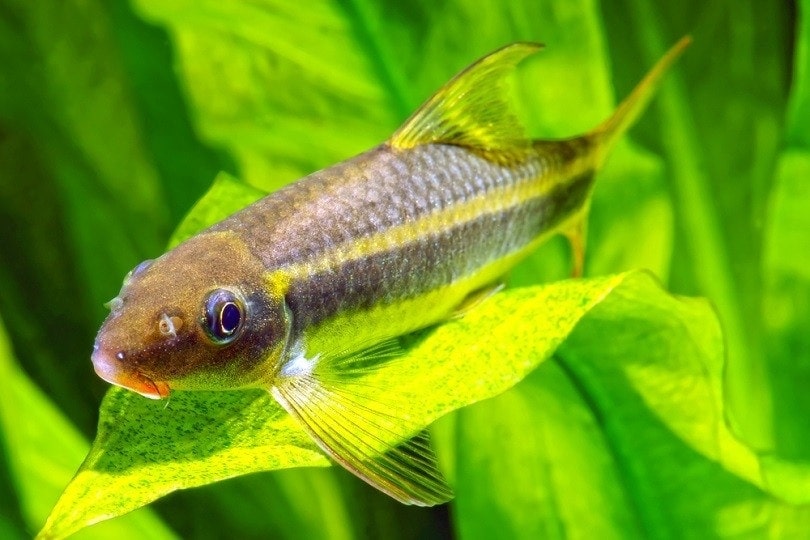
| Size: | 6 inches |
| Diet: | Omnivores |
| Minimum tank size: | 30 gallons |
| Care Level: | Easy |
| Temperament: | Peaceful |
The Siamese algae eater literally has their job in their name title. These silver fish have a very recognizable black strap that horizontally lines their sides. They might not be the flashiest of fish, but they are underrated, in our opinion.
10. Kuhli Loach
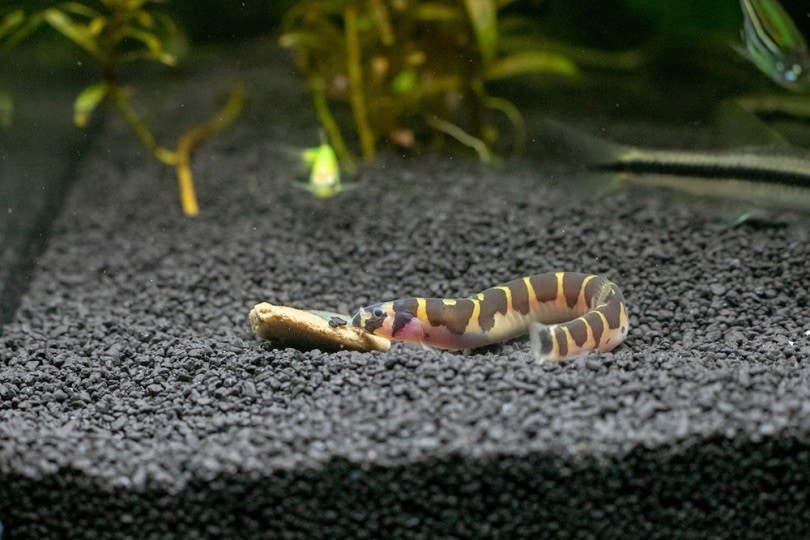
| Size: | 4 inches |
| Diet: | Omnivores |
| Minimum tank size: | 20 gallons |
| Care Level: | Easy |
| Temperament: | Peaceful |
Your Betta’s beauty might pale in comparison to the kuhli loach. These eel-like fish will captivate onlookers with their bright colors, bold patterns, and snaky bodies. These guys are bottom dwellers that love digging and burrowing in sand substrate.
11. Whiptail Catfish
| Size: | 4.4 inches |
| Diet: | Omnivores |
| Minimum tank size: | 30 gallons |
| Care Level: | Easy |
| Temperament: | Peaceful |
The whiptail is an armored catfish with quite a fascinating appearance. Their name translates to “needle,” which accounts for their slender, pointed physical attributes. These fish are generally very peaceful, but they will defend themselves if need be.
12. Ramshorn Snail
| Size: | 1 inch |
| Diet: | Omnivores |
| Minimum tank size: | 5 gallons |
| Care Level: | Easy |
| Temperament: | Peaceful |
The ramshorn snail is a small invertebrate that can stay in tiny enclosures and keep it nice and tidy. They love snacking on decaying plants, uneaten food particles, and soft algae. They keep to themselves and have hardy protective shells to keep them safe.
13. Bristlenose Catfish
| Size: | 5 inches |
| Diet: | Omnivores |
| Minimum tank size: | 20 gallons |
| Care Level: | Easy |
| Temperament: | Peaceful |
The bristlenose catfish is a nocturnal fish that sticks to the sides and bottom of the glass aquarium. They are like miniature living vacuum cleaners. These guys are highly beneficial for your tank since they make your cleanup job so much easier. Plus, they have quite neat appearances.
14. Endler’s Livebearer
| Size: | 1.8 inches |
| Diet: | Omnivores |
| Minimum tank size: | 20 gallons |
| Care Level: | Easy |
| Temperament: | Peaceful |
Endler’s livebearers are tiny fish with mighty hearts. They are very active little guys, zooming around with great speed. Unfortunately, even though they pair well with Bettas and other life, they can be aggressive toward their own species, so be careful with how many you buy.
 Benefits of Algae Eaters in a Betta Tank
Benefits of Algae Eaters in a Betta Tank
When you create your own little ecosystem, your tank life can thrive quite well on its own. Algae eaters come in all shapes and sizes, providing benefits to your aquarium.
Algae eaters might have that name, but they clean up way more than just bothersome green growth. They also reduce leftover food particles, debris, and decaying plant material that could muck up the water.
Even though filtration systems and plants are essential, algae eaters can assume most of the responsibility. Of course, some creatures in this category are more efficient than others, but they all do their part.
Final Thoughts
If you’re looking to add a charming little tank addition that takes care of your algae problem, we hope you have your eye set on one now. You can even buy a variety to keep the enclosure squeaky clean.
All of these algae eaters do their best to sweep up messes, but some of them may be better at the task than others. Of course, you can always try a few of these guys out to see what works best for your aquatic habitat.
Featured Image Credit: Yan Cabrera, Pixabay
 Benefits of Algae Eaters in a Betta Tank
Benefits of Algae Eaters in a Betta Tank
